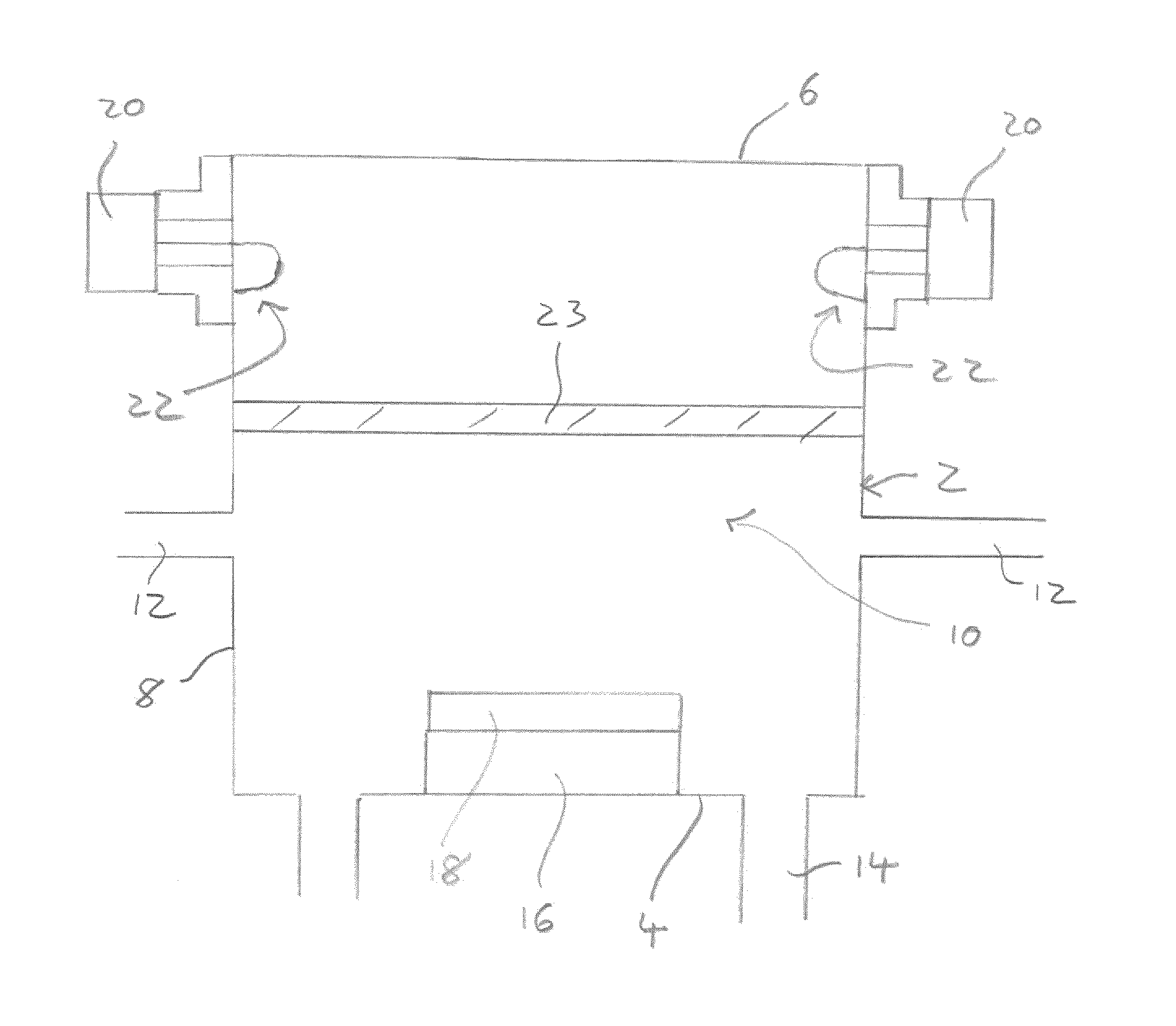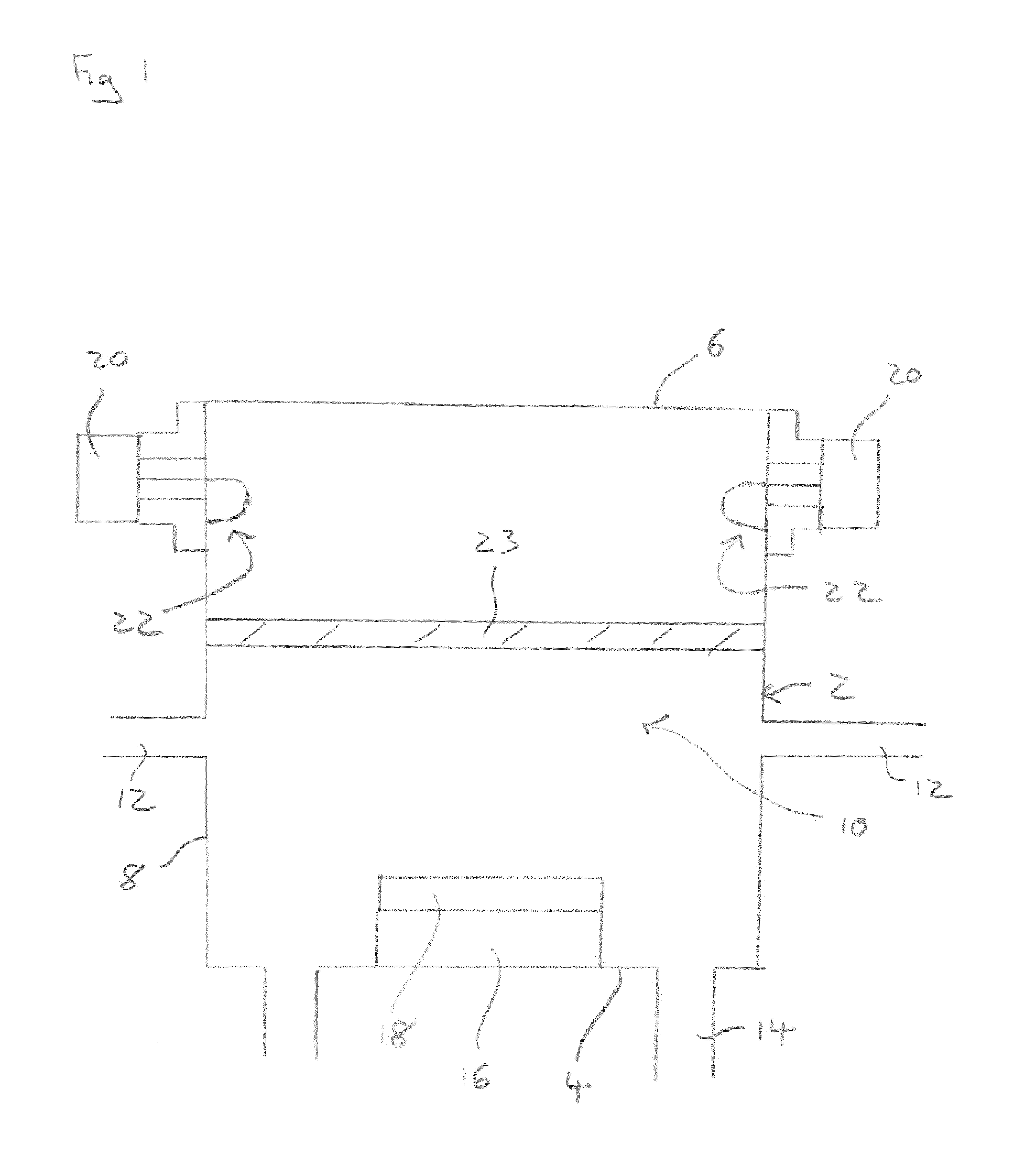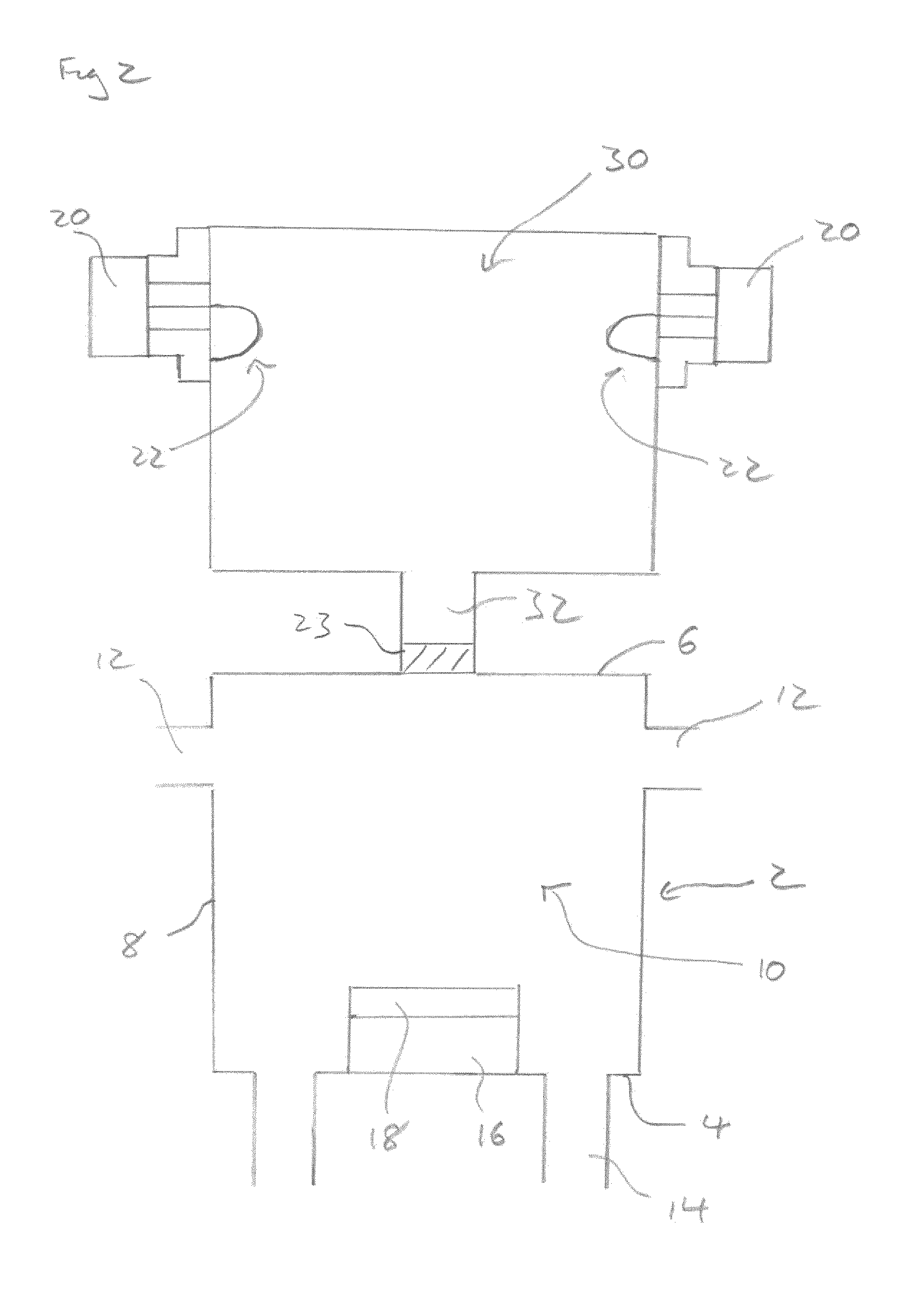A microwave plasma reactor for manufacturing synthetic diamond material
a plasma reactor and microwave technology, applied in the direction of crystal growth process, polycrystalline material growth, chemically reactive gas extraction, etc., can solve the problems unable to meet the needs of the material, unable to meet the requirements of the material, etc., and achieve the effect of reducing the number of dc arc plasmas
- Summary
- Abstract
- Description
- Claims
- Application Information
AI Technical Summary
Benefits of technology
Problems solved by technology
Method used
Image
Examples
Embodiment Construction
[0049]The present applicant has realized that one major contributor to the aforementioned problems is the use of a fixed, single frequency microwave source coupled to the plasma chamber. In this regard, it should be noted that existing microwave sources used for materials synthesis and processing, such as magnetrons, are typically both single frequency and fixed frequency. Furthermore, typically only one such microwave source is used per plasma chamber as the use of two or more conventional microwave sources coupled to a single plasma chamber leads to isolation problems.
[0050]Fixed, single frequency microwave sources are only typically available in permitted bands (due to legislation). This restricts the frequencies available for high power applications such as diamond synthesis. For example, there are two standard frequencies of microwave generator used in the UK: 2450 MHz and 896 MHz (in mainland Europe, the Americas and Asia, the lower frequency standard is 915 MHz, in Australia ...
PUM
| Property | Measurement | Unit |
|---|---|---|
| frequency | aaaaa | aaaaa |
| pulse frequency | aaaaa | aaaaa |
| pulse frequency | aaaaa | aaaaa |
Abstract
Description
Claims
Application Information
 Login to View More
Login to View More - R&D
- Intellectual Property
- Life Sciences
- Materials
- Tech Scout
- Unparalleled Data Quality
- Higher Quality Content
- 60% Fewer Hallucinations
Browse by: Latest US Patents, China's latest patents, Technical Efficacy Thesaurus, Application Domain, Technology Topic, Popular Technical Reports.
© 2025 PatSnap. All rights reserved.Legal|Privacy policy|Modern Slavery Act Transparency Statement|Sitemap|About US| Contact US: help@patsnap.com



